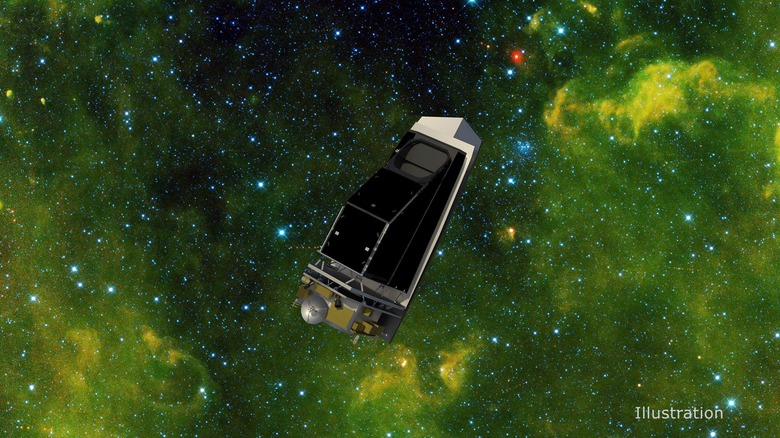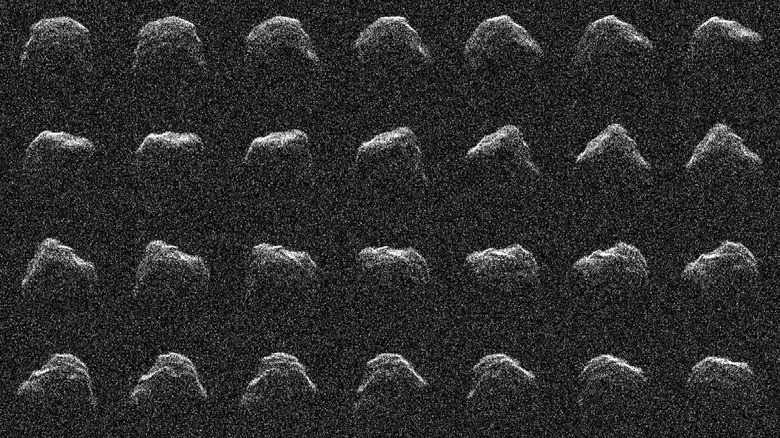Here's How This New NASA Telescope Will Hunt Down Dangerous Asteroids
Last year NASA's DART mission made headlines for successfully deflecting the path of an asteroid for the first time. The idea was to prove a concept: if we spotted a dangerous asteroid headed toward Earth, we could send a spacecraft like DART to intercept it and move it so it would miss the planet. But for this kind of plan to work, we need to be able to spot a potentially dangerous asteroid well in advance of its arrival at Earth, to make sure there's enough time to design and build a spacecraft to intercept it.
Spotting asteroids that could be potentially dangerous to Earth is the job of an upcoming NASA mission called the Near-Earth Object Surveyor or NEO Surveyor. This space-based telescope will peer out into space, looking in the infrared wavelength to search for signs of incoming objects which could be dangerous.
"For the first time in our planet's history, Earth's inhabitants are developing methods to protect Earth by deflecting hazardous asteroids," said NEO Surveyor mission leader Amy Mainzer of the University of Arizona in Tucson in a blog post. "But before we can deflect them, we first need to find them. NEO Surveyor will be a game-changer in that effort."
Construction of NEO Surveyor recently began, with the aim to launch it in 2028 into an orbit around the sun called the L1 Lagrange point.
The challenge of asteroids
Spotting asteroids is challenging for several reasons. Firstly, there is the matter of size. Asteroids over a kilometer in size do exist and are usually relatively easy to see because they are so big, while small asteroids of under 100 meters across don't pose a risk as they would burn up in Earth's atmosphere. But those asteroids in the middle range, from 100 meters to 1,000 meters across, could cause huge damage if they hit the planet but are difficult to detect.
Another reason it's hard to spot threats is that they can come from different directions, so we need to be looking across the whole sky to spot them. As well as asteroids, which typically originate in the asteroid belt, there is also the issue of comets. These contain ice as opposed to rock, and typically originate from the Oort cloud, which makes their paths hard to predict.
A dedicated telescope like NEO Surveyor will be able to detect two-thirds of asteroids that are larger than 140 meters across as well as be able to observe more comets to determine how much of a threat these might be.
Finally, asteroids can be made of different sorts of rock and so can be lighter or darker. The lighter asteroids reflect more light and are easier to see, while the darker ones are even harder to spot. That's why NEO Surveyor looks in the infrared, so it can see the heat given off by the asteroids instead of relying on visible light. As the asteroids get closer to the sun they heat up, and this heat makes them visible in the infrared.
Working in coordination with other telescopes
NEO Surveyor won't be working on its own, as it will be part of a global network of potentially hazardous observation tools. NASA has an office called the Planetary Defense Coordination Office (PDCO) which keeps a list of potentially dangerous objects, which other astronomers can send in reports to if they spot something potentially dangerous. If an object is spotted, the PDCO can warn agencies of what to expect from a strike.
The PCDO also brings together observations so that the orbit of asteroids can be predicted. As asteroid orbits tend to be elliptical, it requires multiple observations to be able to predict whether their orbits will bring them near enough to Earth to be a threat.
"NEO Surveyor represents the next generation for NASA's ability to quickly detect, track, and characterize potentially hazardous near-Earth objects," said Lindley Johnson, NASA's Planetary Defense Officer at PDCO. "Ground-based telescopes remain essential for us to continually watch the skies, but a space-based infrared observatory is the ultimate high ground that will enable NASA's planetary defense strategy."

